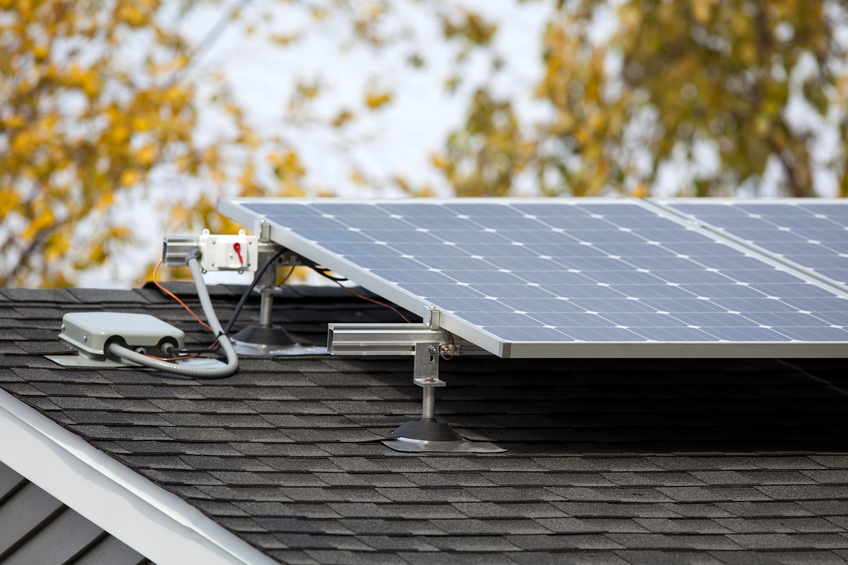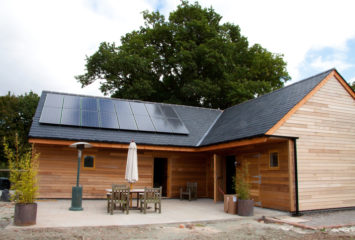Photovoltaic Basics: Common Questions about Solar Arrays
If you’ve spent any time researching solar energy systems and their benefits for your home or business, you probably have come across a few puzzling acronyms. You may have heard terms like “PV,” “CSP,” and “photovoltaic effect” and wondered what they meant.
The primer that follows will define those terms and more. More importantly, it’ll help you understand the basics of solar energy systems: what they do, how they work, and why it’s worth investing in the technology.
What Is PV?
“PV” is short for “photovoltaic,” a word that has been around since the nineteenth century when scientists first started studying light and energy. It combines the Greek word “phos,” meaning light, with “volt,” a unit of electrical measurement. Taken together, the literal translation could be “light-electricity.” It’s an apt descriptor, as photovoltaic processes convert light energy into electricity.
What Is a Photovoltaic Solar System?
When you see a building with solar panels on the roof, what you’re seeing is one part of a PV system or array. An array actually has several separate components that help it turn sunlight into usable electricity.
- PV Cells: The most basic unit of solar tech, a PV cell is a small wafer — usually made of silicon — that absorbs sunlight and turns it into electricity.
- PV Modules: Also known as photovoltaic panels, PV modules are groupings of PV cells fixed into a frame. They are generally either mounted on roofs or installed over open ground space.
- Batteries: Some solar systems use batteries to store excess electricity produced by a set of solar panels. Though not necessary for every array, battery banks do allow for a bit more independence from traditional utilities.
- Charge Regulators: A charge regulator, sometimes called a charge controller, helps regulate the amount of energy running between PV panels and their attached battery banks. Any PV array that uses batteries should have a charge controller.
- Inverters: An inverter changes direct current (DC) energy into alternating current (AC) energy, which is what most household appliances use. Any solar system designed to power basic residential electronics needs an inverter.
How Do PV Systems Work?
A PV system converts light to electricity through a process known as the photoelectric effect. When sunlight hits a PV cell, the solar energy excites electrons inside the cell. This triggers a chain reaction in which the supercharged electron escapes into a conductive contact to become part of an electrical circuit. That new electricity flows across the array’s wiring, through an inverter, and then into your home’s main electrical system for use.
Solar arrays with battery banks follow a very similar process. The only difference is that the raw electricity coming out of the panels runs through a charge controller and into the battery bank for storage before traveling to the inverter.
How Is a PV System Different from Other Solar-Powered Systems?
A photovoltaic array is just one of a few different types of solar technology on the market. There are a number of other system setups, each serving a slightly different purpose.
- Concentrating solar power (CSP) systems rely on reflective devices such as mirror panels to concentrate the sun’s energy and produce the heat needed to generate electricity.
- Solar water heating systems employ solar “collectors” to gather heat from the sun. That heat is then channeled down into a tank of water to warm it.
- Solar air heating systems also use collectors to harvest solar thermal energy. Unlike solar water heaters, however, these setups use the collected energy to preheat ventilation air for homes and commercial buildings.
How Long Do PV Systems Last?
Photovoltaic systems designed and installed by a professional and kept in good operating condition can last for more than 20 years, though some arrays come with warranties for up to 30 years. Even past that, you’re more likely to request repairs for the wiring and hardware due to wear and tear than to replace the PV panels.
What Are the Benefits of Owning a Solar PV System?
A big selling point for solar power is its positive environmental impact. Solar power is considered a type of green energy, meaning it’s better for the environment than traditional fossil fuels. Because you can use solar power to run nearly any electrical system, including lighting and appliances, it’s an easy and efficient way to reduce your overall carbon footprint.
Another big benefit is that a solar array can help protect you against high electricity bills, as the energy generated by the system can offset reliance on the grid. Some states even allow solar array owners to sell excess solar energy back to the utility through a process called net metering.
Do I Need to Live in a Sunny Location to Take Advantage of Solar PV?
You don’t need to live in Arizona or California to use a solar array. Panels do perform better in sunny areas, but the efficiency decrease in overcast areas isn’t prohibitive. Many states in the cloudy northeast — including New Jersey, Massachusetts, and New York — are among the leading investors in solar technologies in the U.S. As long as you place your PV panels in a location where they can get the maximum amount of sunlight — usually facing south or west — you can likely benefit from the power they provide.
How Much Does a PV System Cost?
Current estimates place solar panels at around $3.70 per watt, though overall costs will vary due to the environment, building structure, installation service, and ongoing maintenance needs of your specific array. Keep in mind that much of those initial expenses can be balanced out with rebates and other incentives, making PV technology a relatively affordable investment.
Solar energy is good for the environment and your wallet — and the current technology is only improving as time goes on. To stay up to date with the latest solar trends, and to learn more about current solar opportunities, visit the Solar News section on our website.


